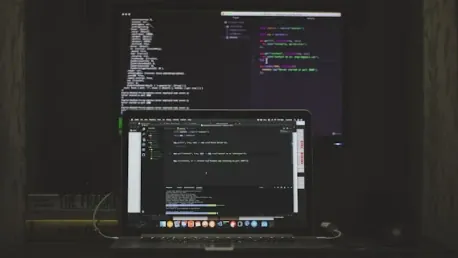The world of programming is constantly evolving, with new languages emerging to address the limitations and challenges posed by older, more established languages. These cutting-edge programming languages aim to streamline coding processes, enhance performance, and tackle complex problems more efficiently. In an industry where efficiency and innovation are paramount, understanding these languages and their unique offerings is crucial for developers looking to stay ahead of the curve. This article delves into 11 groundbreaking programming languages that are set to shape the future of coding, each bringing its own distinctive features and advantages to the table.
Coq: A Mathematical Approach to Programming
Coq is a language that elevates programming through a mathematical lens, transforming the way complex problems are tackled. By defining problems in a theorem about a hierarchy of types and subsequently finding and verifying proof of the hypothesis, Coq stands out for its academic and theoretical approach to development. This structure proves valuable in solving multilayered, rule-intensive issues, making it a powerful tool for developers dealing with complex systems. While Coq may seem overly intricate for simpler applications like games, its rigorous approach ensures that solutions are both accurate and reliable. This makes Coq particularly useful in fields where precision is paramount, such as formal verification and theorem proving. Its robust framework allows developers to prove the correctness of algorithms and systems before they are even implemented. Coq’s ability to handle complex, rule-based problems sets it apart from more traditional programming languages. By formalizing specifications and proofs, Coq minimizes the risk of errors and bugs in critical systems, making it an invaluable asset in high-stakes fields like aerospace, finance, and security.
Observable: Versatile Framework for Data Visualization
Observable isn’t a traditional language per se but rather a versatile framework built for crafting data displays and dashboards. It boasts compatibility with various languages, allowing developers to weave together code from different ecosystems seamlessly. The top-level code is written in markdown, while supporting languages such as JavaScript, SQL, Python, or R handle different layers, emphasizing the platform’s flexibility and dependability for real-time data visualization and telemetry. This flexibility makes Observable an invaluable tool for developers working with large datasets or requiring real-time data interactivity. By integrating multiple languages, Observable allows for a more dynamic and responsive approach to data visualization, making it easier to create complex dashboards and data displays. Developers can leverage the strengths of each language to build intricate and multifaceted visualizations, which can be particularly beneficial in industries such as finance, healthcare, and environmental monitoring. Observable’s integrated approach ensures that data manipulation, analysis, and presentation are streamlined and efficient, enhancing the overall user experience. The framework’s real-time capabilities enable developers to provide up-to-date insights and analytics, fostering a more informed decision-making process.
Plang: AI-Integrated Coding
Plang signifies a significant leap in programming language evolution by integrating large language models (LLMs) directly with a compiler. This blend enables automatic code generation based on rudimentary instructions, alleviating the need for detailed coding from scratch. While Plang’s outputs can be astonishing and often almost complete, developers should remain wary, as it’s a system not governed by rigid semantic rules. Despite this, Plang can streamline workflows and reduce the coding workload significantly. By leveraging AI, Plang allows developers to focus on higher-level problem-solving rather than getting bogged down in the minutiae of coding. This makes it an exciting development in the world of programming languages. Plang opens up new possibilities for rapid prototyping and development, allowing for quicker iterations and adjustments. The integration of AI-driven coding can also lead to innovations in personalized software development, where the language can adapt to the specific needs and preferences of different developers. The presence of AI in programming heralds a future where coding becomes more accessible, creative, and efficient, even for those who may not have deep technical expertise.
Python Supersets: Mojo and Erg
Both Mojo and Erg extend Python, a popular and widely-loved language, by incorporating robust features such as static typing and memory safety. These supersets aim at enhancing performance while maintaining Python’s simplicity and familiarity. Mojo, as a strict superset, ensures compatibility with existing Python code and promises superior performance, especially useful in AI and system-level applications. Erg, although largely compatible, leans towards functional programming, encouraging developers to adopt new, more stringent coding practices for increased efficiency and reliability. By building on the strengths of Python, Mojo and Erg offer developers enhanced functionality without sacrificing the ease of use that has made Python so popular. The addition of static typing in Mojo helps catch errors at compile-time, reducing bugs and improving code stability, which is paramount in complex AI and machine learning applications. Meanwhile, Erg’s focus on functional programming promotes immutability and pure functions, which can lead to safer and more predictable code. These advancements ensure that Python remains a versatile and powerful language in a rapidly evolving tech landscape.
Programming at the Edge: MoonBit and Wing
Edge computing often relies on traditional languages like JavaScript, Java, or Python, but MoonBit and Wing offer a fresh approach, addressing the unique needs of this domain. MoonBit focuses on minimizing executable sizes and optimizing performance by employing static typing and object-functional synthesis, which is then converted into efficient WebAssembly. Wing simplifies cloud programming by abstracting away the complexities of network management, identity handling, and access regulation, compiling down to JavaScript for efficient execution. These innovations make MoonBit and Wing ideal for developers working in edge computing, where efficiency and performance are critical. By streamlining the development process and enhancing performance, these languages ensure that applications can run smoothly even on limited hardware resources. MoonBit’s approach to static typing and object-functional synthesis reduces runtime errors and improves code efficiency, making it a suitable choice for real-time data processing and IoT applications. Wing’s ability to abstract cloud-specific challenges allows developers to focus more on application logic rather than infrastructure management, facilitating faster development cycles and quicker deployment of edge solutions. Together, these languages are poised to drive the next wave of innovation in edge computing.
Memory Ownership: Rust, Zig, Jakt, Odin, and Mojo
Memory management remains a perennial challenge for developers, and languages like Rust have pioneered a novel memory ownership model, ensuring enhanced safety and performance. Rust’s model, which grants each value a single owner while allowing others to borrow it, inspired similar features in Zig, Jakt, Odin, and Mojo. This approach mitigates common issues like race conditions and null dereferences, thereby producing more stable and efficient code. Zig is notable for its C-like syntax tailored for system-level operations, whereas Jakt transpiles into C++ for developers accustomed to this ecosystem. By addressing the challenges of memory management, these languages offer developers a more reliable and efficient way to handle system-level programming. Rust’s memory safety model has been particularly influential, setting a new standard for secure and performant code in systems programming. The incorporation of these principles into newer languages like Zig, Jakt, and Odin demonstrates a broader trend towards robust and fault-tolerant software development practices. These languages not only enhance code reliability but also empower developers to build more complex and high-performance applications with greater confidence.
Common Themes and Key Points
A core theme across these languages is the emphasis on enhancing efficiency, reliability, and safety in programming. Many of these languages incorporate modern computational theories and methods to elevate coding practices. Coq’s theorem-based structure pushes the boundaries of mathematical approaches to programming, while Observable facilitates real-time data interactivity and visualization. Plang integrates AI for intuitive code generation, while Python supersets like Mojo and Erg enrich the robust performance of the original language. Emerging languages such as MoonBit and Wing tackle edge computing challenges, ensuring faster execution and better resource management. Memory ownership, exemplified by Rust and its cohorts, signifies a broader trend towards eliminating prevalent errors in system-level programming. The common goal among these languages is to provide developers with tools that not only simplify complex tasks but also enhance the overall quality and robustness of their code. These advancements are driving a new era of programming where efficiency, safety, and ease of use are paramount, setting the stage for the next generation of software development.
Overarching Trends and Consensus
The programming language landscape is shifting towards tools that integrate theoretical, automatic, and performance-enhancing features. Programmers are increasingly seeking languages that can inherently prevent errors, simplify complex problem-solving, and effectively manage resources. Languages like Rust, with its ownership model, underscore the growing importance of memory safety. Simultaneously, AI integration, as seen in Plang, highlights the trend towards leveraging machine learning to streamline coding tasks. Furthermore, there is a noticeable leaning towards languages that enhance or extend existing popular languages. Python’s popularity has inspired superset languages like Mojo and Erg, which promise improved performance and new features without sacrificing familiarity. Edge computing solutions like MoonBit and Wing indicate a drive towards efficiency in emerging computing paradigms. These trends are shaping a future where programming languages are not only more powerful and capable but also more intuitive and accessible. The convergence of these advancements is creating a dynamic and innovative landscape in which developers can more easily navigate the complexities of modern software development.
Condensation and Synthesis
The article effectively streamlines the evolutionary trajectory of programming languages by exploring various innovative solutions designed to simplify complex coding challenges, enhance performance, and ensure reliability. Each of the languages discussed, whether through theoretical rigor, integration of AI, or improved memory management, brings distinct advantages to the programming community. The synthesis of information reveals a cohesive narrative: the rise of these languages is a response to the limitations and challenges experienced with older languages. There is a clear trend towards creating languages that can seamlessly blend with existing ones while offering additional benefits like safety, speed, and ease of use. The detailed exploration of these cutting-edge languages highlights their unique contributions and the overarching goals they aim to achieve. By addressing specific pain points in traditional programming, these languages are paving the way for more efficient and effective software development practices. The focus on enhancing performance, reliability, and safety is driving a significant shift in how programming is approached, setting new standards for the industry.
Main Findings
Innovative problem-solving approaches are exemplified by languages like Coq, which employ mathematical models for complex issues, enabling precise and reliable solutions. Data visualization and interactivity are greatly enhanced by Observable, which offers a versatile framework for real-time data displays with cross-language compatibility. AI-integrated coding, embodied by Plang, facilitates intuitive code generation, significantly reducing manual coding efforts and allowing developers to focus on higher-level tasks. The enhanced functionality of Python supersets Mojo and Erg provides robust features like static typing and memory safety, ensuring better performance while maintaining simplicity. Efficient edge computing solutions are offered by MoonBit and Wing, which address specific needs of edge environments with optimized performance and resource management. Memory safety and ownership are tackled by languages such as Rust, Zig, Jakt, and Odin, which provide reliable and efficient system-level programming by mitigating common errors. These findings underscore the transformative impact of these innovative languages on the future of coding, highlighting their potential to revolutionize software development practices.
Conclusion
The programming world is ever-changing, with new languages continually being developed to overcome the limitations and obstacles of older, well-established languages. These innovative programming languages are designed to make coding more efficient, improve performance, and solve complex problems with greater ease. In an industry where functionality and innovation are key, it’s essential for developers to be knowledgeable about these new languages and what they offer. This understanding helps them stay competitive and at the forefront of technology. This article explores 11 pioneering programming languages that are poised to influence the future of coding, each offering unique features and benefits that set them apart. From enhanced syntax to improved runtime, these languages promise to revolutionize the way developers approach software design. By embracing these new tools, programmers can tackle modern challenges with innovative solutions and maintain an edge in the ever-evolving tech landscape.









